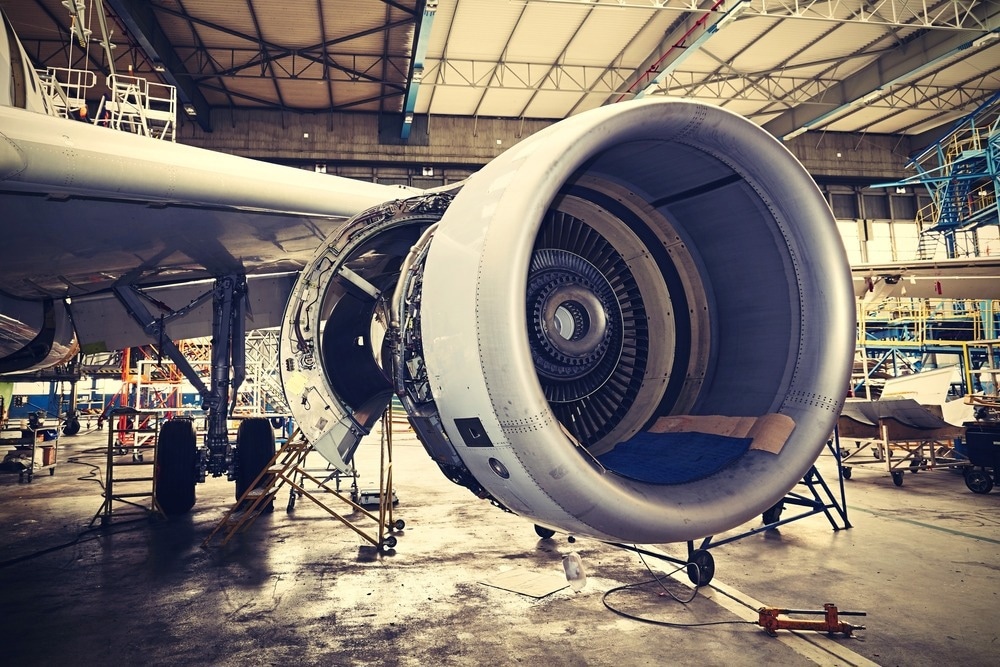A research team from the Basque Research and Technology Alliance and the University of the Basque Country in Spain have presented research on low creep aerospace grade epoxy vitrimers. The results of their study have appeared in the journal Polymers.

Study: Aero Grade Epoxy Vitrimer towards Commercialization. Image Credit: Jaromir Chalabala/Shutterstock.com
Epoxy Resins
Epoxy resins are an essential material for many commercial purposes. These resins are used to manufacture thermoset materials which are utilized for structural applications due to favorable mechanical properties, creep resistance, chemical resistance, and high glass transition temperatures. The aerospace and renewable energies sector are two major industries that utilize thermoset polymers.
There are drawbacks to these materials, however, which limit their application somewhat. After curing, they are impossible to dissolve, reprocess, or recycle. This diminishes their environmental friendliness compared to thermoplastics. Critically, at the end of their life, a vast amount of waste is generated. The long curing times of these materials also limit their production volume.
Thermoset plastics are commonly disposed of by landfilling or pyrolysis, which presents several environmental challenges with them, especially the release of toxic by-products into the environment and increased carbon emissions. Difficulty with recycling, reprocessing, and waste also present severe economic concerns.
Improving these Materials
Innovative approaches have been explored in the past decade to improve thermoset polymers into more dynamic materials. This has been achieved through the incorporation of dynamic covalent bonds into the polymeric network of these materials.
Introducing these bonds gives polymers several functional characteristics. These include self-healing abilities, recyclability, shape memory, and adaptability, and allow the reprocessing of these important materials into new products. Incorporating dynamic covalent bonds into the network at each crosslinking point leads to the formation of a covalent adaptable network, which is a new concept in polymer science.
Covalent adaptable networks contain a covalent bond, which is exchangeable, at each crosslinking point. Thermal treatment or other stimuli can be used to rearrange this bond. A dissociative or associative mechanism participates in this rearrangement of bonds.
Associative methods maintain crosslinking density at high temperatures due to the simultaneous formation of covalent bonds or the formation of bonds before a break occurs. Dissociative methods, on the other hand, promote viscosity through triggered dissociation of bond equilibrium. Crosslinking density is decreased, obtaining a material that acts in the same manner as a thermoplastic.
Key work in this field was undertaken by Leibler et al. wherein the team demonstrated that zinc catalysts can promote transesterification exchange in crosslinked epoxy-based polymer networks. These materials are referred to as vitrimers.
Vitrimers: Challenges
There is one major drawback to vitrimers, which makes their synthesis and commercial use challenging. They are vulnerable to creep at operational conditions. Creep is the continuous deformation of materials under specific temperature and load conditions. This phenomenon is time-dependent.
Stress relaxation is beneficial for vitrimers as it improves their malleability and reprocessing potential. However, high-temperature creep is highly undesirable for these materials as it limits the ability to reuse the materials for high-performance applications such as those which meet the demands of the aerospace industry.
Previous studies by the authors of the new paper in Polymers have demonstrated that, by carefully selecting dynamic covalent bonds and tailoring their kinetics, creep can be suppressed below the glass transition temperature or vitrimer temperature. However, other studies have demonstrated the presence of significant creep below these temperatures.
The Study
The aim of the study is to develop a vitrimer with comparable performance to a commercially available thermoplastic resin used in the aerospace industry (HexFlow®RTM6) with favorable properties such as recyclability, weldability, reparability, and reprocessability.
In the research, the authors have presented an epoxy vitrimer with high glass transition temperature which is simple to manufacture and has commercial potential. The material was thoroughly characterized in the paper. Curing kinetics, mechanical, and thermal properties were thoroughly investigated. Creep and stress relaxation experiments were employed to study the resin’s dynamic properties.
The prepared aerospace-grade epoxy resin-based vitrimer developed by the team demonstrated comparable creep resistance to the commercially available thermoplastic resin used in the industry. The network's high activation energy plays a key role, giving the resin the ability to arrest its dynamic behavior at high temperatures and resist creep up to the material’s glass transition temperature.
Incorporating up to thirty percent permanent crosslinks can be introduced into the vitrimer without losing the benefits of reprocessability and giving the material desirable mechanical and thermal properties which can meet regulations. This means that the material can meet the high-performance demands of aerospace applications whilst improving the sustainability of parts constructed from vitrimers, making it an ideal candidate material for the sector.
More from AZoM: ICP-MS for Trace Metal Analysis
Further Reading
De Luzuriaga, A.R. et al. (2022) Aero Grade Epoxy Vitrimer towards Commercialization Polymers 14(15) 3180 [online] mdpi.com. Available at:
Disclaimer: The views expressed here are those of the author expressed in their private capacity and do not necessarily represent the views of AZoM.com Limited T/A AZoNetwork the owner and operator of this website. This disclaimer forms part of the Terms and conditions of use of this website.